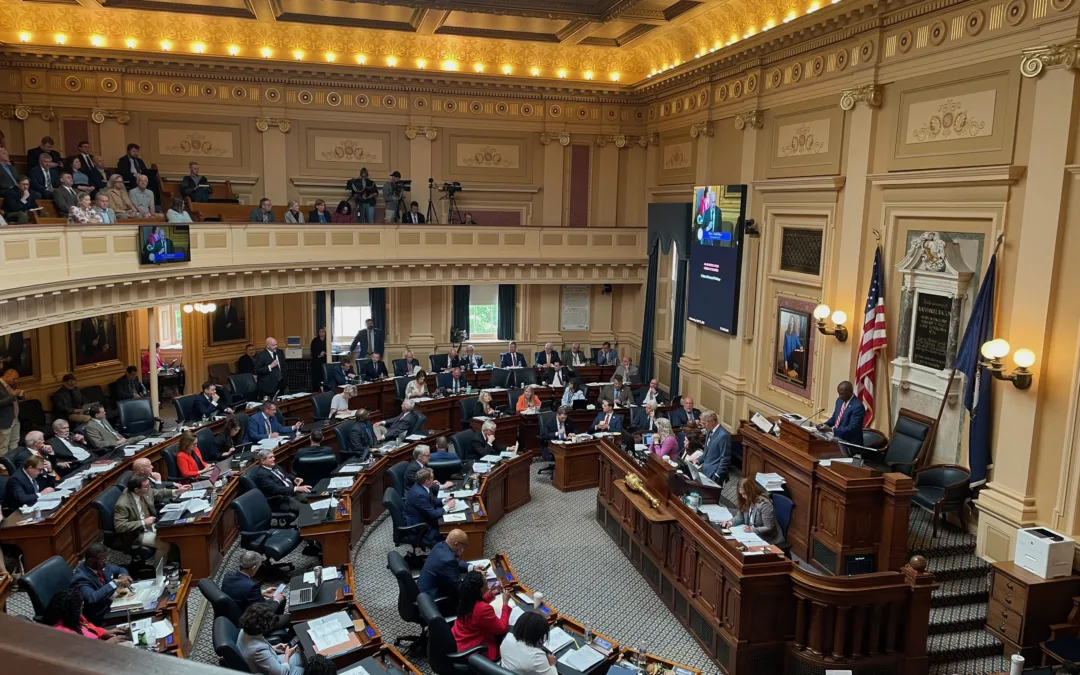
The afternoon sun illuminates the statue of Confederate General Robert E. Lee on Monument Ave in Richmond, Va., Monday, Oct. 19, 2020.
Both sides weighed in during a six-hour court session Monday.
RICHMOND-Can Gov. Ralph Northam remove a statue of Confederate General Robert E. Lee from Richmond? Or does a document signed in 1889 take away that power? That’s the question a local judge has to answer in the next two weeks.
On Monday, Richmond Circuit Court Judge W. Reilly Marchant heard six hours of testimony as lawyers tried to convince him to rule in their favor. The focus here is on a bronze statue of Lee standing 21-feet-high and weighing 12 tons. This statue is the last and the largest monument of its kind in Virginia. And has by far caused the most issue in its removal.
“It’s a very difficult case. It’s a difficult case for our city, it’s a difficult case for the nation,” Richmond Circuit Court Judge W. Reilly Marchant said.
Earlier in the year, there was a huge push for the removal of Confederate monuments across the country. The police killings of unarmed Black people like George Floyd and Breonna Taylor prompted a nationwide dialogue about America’s racist past and how it affects the present. Virginia, being the state with most Confederate monuments by far, received a lot of pushback.
However, in March, the General Assembly ruled that each locality could take down their monuments at their own discretion. Soon, every city from Portsmouth to Williamsburg removed Confederate statues.
READ MORE: 11 Confederate Statues Are Coming Down in Richmond. Here’s What You Need to Know.
But removing the final monument wasn’t that simple. This monument is a six story bronze statue of Gen. Robert E. Lee is located right in the middle of Richmond’s famed Monument Ave. While there’s plenty of community support in favor of its removal, several Monument Ave. residents do not want to see the statue put away.
Challenging the state
In June, Gov. Northam labeled the statue as a racist symbol and ordered the Virginia Department of General Services to take it down. This process involves two phases and an onsite inspection. In response, several residents filed a lawsuit, attempting to stop the memorial’s removal.
Monument Avenue and the surrounding area are a National Historic Landmark District. One of the group’s arguments is that without the Lee statue, that status goes away.
“Plaintiffs enjoy certain benefits as a consequence of their ownership of real estate within the district, which will be adversely affected by any actions of Defendants to remove, damage or alter the Lee Monument,” the lawsuit states.
The group receives what they describe as “favorable tax treatment” from owning property in the district. Without the statue and the Historic status, they’re concerned about losing both “favorable tax treatment” and property value. However, the plaintiffs’ side gave no testimony Monday to back up either of these arguments.
Here’s where the legal argument comes into play. The question is if Northam legally has the power to remove the statue. The local residents argue taking down the bronze figure, installed in 1890, would violate the agreement reached 131 years ago. When the General Assembly accepted transfer of property in 1889, they agreed to several restrictive covenants in the deeds, the group’s attorneys argue.
Those documents prevent the statue from being removed, the plaintiffs claim, as they require it to be protected and held “perpetually sacred”. The problem with that argument is at least one of the documents is no longer valid. Last week, the Virginia General Assembly repealed that 1889 law accepting the deed to the statue.
Who has control?
If the deed is no longer valid, Virginia Solicitor General Toby Heyten argued Monday, then there is no case. Heyten said the statue no longer lines up with Virginia’s values of equality and inclusivity. And the state should not be strong-armed by private parties into keeping the monument up.
“I just need to emphasize one more time the extraordinary nature of the claim the plaintiffs are making here,” Solicitor General Toby Heytens said in court. “They are claiming that private parties can enlist the power of the courts to force a sovereign state to continue to broadcast a message that the leadership of that sovereign state no longer wishes to do.”
Saying he recognized the strong emotions involved and the history of the case, Marchant said he will likely announce his ruling in seven to 10 days. He added that a decision will be made before the current injunction, which prevents the statue’s removal, expires on Nov. 1.
Until then, the people of Richmond have transformed this statue into an art installation that celebrates Black lives. Recently, the New York Times Style Magazine called it one of the most influential pieces of American protest art since World War Two.
Arianna Coghill is a content producer for Dogwood. You can reach her at [email protected].
Brian Carlton is Dogwood’s managing editor. He can be reached at [email protected].
Politics

Youngkin, Democrats to start over on budget talks
The Republican governor stood with Democratic leaders in the General Assembly on Wednesday in a bid to ease tensions over their budget debate....

VIDEO: Domestic abuse victims speak out against the gun law bills Gov. Glenn Youngkin vetoed
Senate Bill 47 and House Bill 46 aim to close the loophole that allows offenders to transfer their firearms to someone else instead of relinquishing...
Local News

Virginia verses: Celebrating 5 poetic icons for National Poetry Month
There’s no shortage of great writers when it comes to our commonwealth. From the haunting verses of Edgar Allan Poe, who found solace in Richmond's...

Join the fun: Recapping Family Literacy Night’s storybook adventures
When’s the last time you read a book aloud with a loved one? If it’s difficult to answer that question, then maybe it’s time to dust off that TBR...




